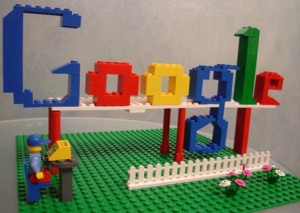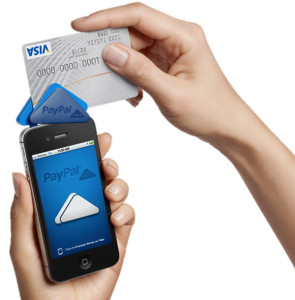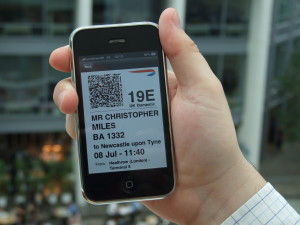October 1st, 2013 by Elma Jane
Google announced Wednesday that it is opening its Google Shopping Express service to shoppers in the entire San Francisco Bay Area, marking the official launch and first big expansion of the company’s same-day delivery service. Google began testing the retail delivery service this year among a limited set of invited consumers in a few areas within the Bay Area, but the new announcement extends the service to anyone in an expanded region ranging from San Francisco to San Jose. With the service, online shoppers can place online orders from several chain stores and have those products delivered within the day.
Also on Wednesday Google released an app for iOS and Android that allows users to browse the shopping sites and order products directly from their smartphones. New users who sign up before the end of the year can get six months of free, unlimited delivery service; it costs $4.99 per store order.
Race to Deliver
Google is not the only company to experiment with the same day delivery offerings. Walmart and eBay are both testing similar services…eBay now even offers the delivery within an hour, although consumers can only shop from a single store. Amazon is also following in the footsteps of companies like Fresh Direct and rolling out same-day deliveries on groceries to consumers in Los Angeles and Seattle. Google understands that it will have tough competition in the space and can afford to take a loss on the service at first, which is why it is offering the service for free for new users, said an e-commerce consultant. It is evident from the low price and free sign-up offer that Google is not interested in making money in the short term, that will come once there is a widespread adoption of their service…
A Lot of Challenges Ahead
Although Google is not a retail hub at its core, the company has other strenghts that could help it gain an advantage over its competitiors. Being a default search provider for many millions of users on all platforms, from desktops to tablets right through to mobile phones, can give Google an edge over Amazon and eBay.
Still the key element to a successful e-commerce platform is logistics. Google might have deep pockets and effective algorithms, but it has a a lot of cathing up to do to make sure its delivery service could compete with those of companies like Amazon and eBay, which have years of experience delivering products to consumer worlwide.
“Google certainly has the stamina and budget to give it a good run, but there are a lot of moving parts”. Being a big data company doesn’t automatically mean you’ll be good at the logistics, so they’re going to have a lot of challenges ahead.
Posted in Credit card Processing, e-commerce & m-commerce, Electronic Payments, Merchant Account Services News Articles Tagged with: Amazon, Android, app, delivery, desktops, e-commerce, ebay, google, iOS, mobile phones, online, platforms, shopping, tablets, walmart
October 1st, 2013 by Elma Jane
PayPal announces updated app, device for hands-free, in store payment.
A busy few days at PayPal. Late last week, the global payments giant announced a major update to its app for Android and iOS. The new features have a strong mobile payments bent. And now, the company has announced the planned roll-out of “Beacon,” which uses Bluetooth Low Energy Technology to let customers check into retail stores and pay by verbal consent.
Paypal’s President calls the solution PayPal’s “most significant contribution to date in reinventing the in-store shopping experience.”
Beacon is a new add-on technology that merchants plug into an A/C outlet. When a PayPal customer walks into a participating store and agrees to check-in, Beacon triggers a quick vibration or sound to confirm a check-in; customer’s photo then appears on a point-of-sale screen. To pay, the customer simply gives a verbal confirmation. “No wallet and no card. Nothing to do. Not even touching your phone.
BLE was chosen to resolve some problems posed by traditional geo-location, including power consumption. It will look for any store running a PayPal compatible POS system, and will only transmit information to PayPal or to the merchant if the customer agrees to check in.
The solution aims to improve on the credit-card-swiping experience. PayPal figured the only better way to pay would be to do nothing.
The company will be piloting Beacon in the fourth quarter.
New App
PayPal’s vastly redesigned app for creating a more seamless in-store shopping experience is getting a lot of kudos across the web.
A New tab called “Shop” the first thing that appears when the app is opened, it displays nearby stores or restaurants that accept PayPal payments. Users can check in and open a tab, then select various payment methods from the check-in screen. Upon payment, the app generates a confirmation alert and sends an email receipt.
You’ve really got access to your entire wallet in the app.
The app also lets you order food ahead of your arrival bypassing the line. The feature works through PayPal’s partnership with Eat24 . Dinners can pay at the table, and at some locations, order more drinks.
For the first time, the app includes a Bill Me Later tab that lets users apply to finance PayPal purchases, and it integrates coupons and offers.
The company wanted the new app to help solve problem, and that payment isn’t something they typically complain about. So they focused on other potentially problematic experiences in the retail environment, waiting in line, waiting to pay the bill at their table and keeping track of coupons.
Posted in Credit Card Reader Terminal, Credit Card Security, Digital Wallet Privacy, Electronic Payments, Mobile Payments, Near Field Communication, Point of Sale, Smartphone Tagged with: Android, app, Apple, card, credit-card-swiping, geo-location, iOS, payment, PayPal, POS, retail, system, wallet
September 26th, 2013 by Elma Jane
With revamped iPhone app Travelocity rethinks smartphone bookings
To accommodate for the more gesture-based features in Apple’s new iOS 7, Travelocity rebuilt its iPhone application from the ground up. The online travel agency’s new app is aimed at moving users through the booking process quicker with more visuals. Travelocity has been streamlining all parts of the trip-planning experience with its mobile apps continuously in the past few years.
“Luckily, we have a great, agile team and some top-notch mobile designers, so we were able to dive into the new design as soon as the beta was released. “We also decided early on to rebuild this version from scratch and really work on making it fast and reliable,” said Blake Clark, director of mobile for Travelocity. “We find mobile travelers demand speed and sometimes they’re in less-than stellar connection areas, so that was a big one.”
Streamlined design
Tavelocity updated its iPhone app with a design that highly plays up images and visuals. The app’s home screen shows photos of world cities to inspire consumers to take a last-minute trip. The app also leverages the new AirDrop feature of iOS 7 to let consumers securely share their travel information with friends and family members after they book a hotel.
The new app includes a feature that lets consumers scan their credit cards with a built-in camera feature to cut down on the number of steps that it takes consumers to check out. The technology detects the number on a credit card and automatically fills in portions of the checkout page. The app also highlights Travelocity’s mobile-exclusive offers that take into account a user’s location to serve up relevant offers and deals.
Travel on mobile
Travelocity has been building up its mobile strategy for quite some time with different mobile products and ad campaigns. Most recently, the brand designed its Web site around responsive design, which led to a 6 percent increase in iOS bookings and an 8 percent jump for Android reservations after two month.
Travelocity’s tablet booking experience was also named the best this spring in a study from Mobivity.
Travelocity is the latest example of how iOS 7 has shifted the way that marketers develop mobile apps with more gesture- and touch-based features. “It’s a shift of how Apple customers interact with their devices, and as a leader in the travel space, we wanted to make sure we’re reducing the amount of friction travelers have when booking a trip.” “With the iOS 7 launch, now our app and the device look, work and feel the same; it’s seamless.” Mr. Clark said.
“Travelers can easily access the deep selection and great value Travelocity is known for. Travelocity’s goal – to be a traveler’s trusted companion before, during and after the travel experience.”
Posted in Credit card Processing, e-commerce & m-commerce, Electronic Payments, Mobile Payments, Near Field Communication, Travel Agency Agents Tagged with: agencies, agency, agency's, agent, app, booking, iOS, ios7, Iphone, mobile, smartphone, travel, travelocity


